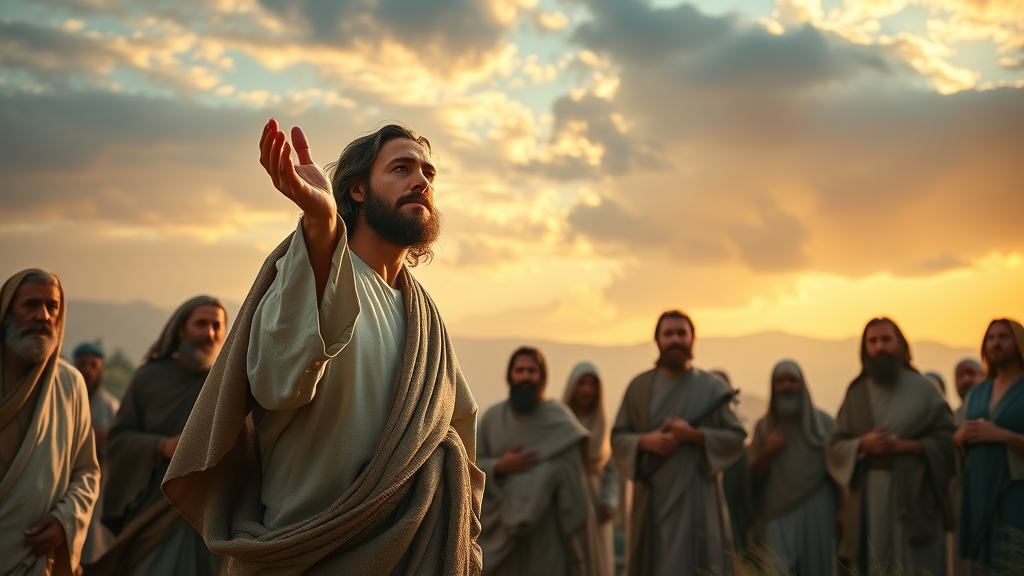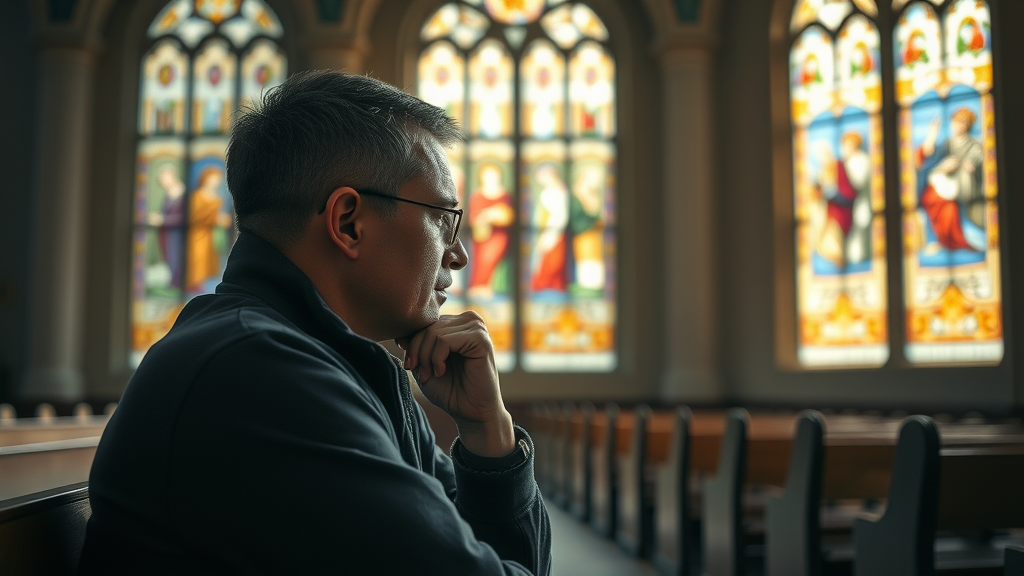Are Christian miracles just ancient legends, or do they still shape hearts and communities today? If you've ever wondered whether what you read in the Bible still has relevance—or if miraculous stories could really happen in your life or the world around you—this article will challenge your assumptions, inspire deeper reflection, and invite you to see faith through new eyes.
Are Christian Miracles Still Relevant? Challenging What You Think You Know
- What constitutes Christian miracles and why they matter today
- How miracles of Jesus shaped early Christian faith
- The role of signs and wonders in contemporary Christianity
- Modern perspectives and debates on miracles today
- Real stories and evidence of miracles
- Insightful answers to the most frequently asked questions
Christian miracles are more than distant stories told from pulpits; they are woven into Christian faith and the fabric of human hope. For many believers, the miracles of Jesus serve as a foundation for understanding how God works —showing compassion, healing the blind man, raising a son back to life, and turning despair into the good news that still resonates today. These acts aren’t just historical footnotes; they challenge us to approach miracles with faith and curiosity even in the 21st century.
Today, signs and wonders continue to inspire wonder and debate, as communities share miraculous stories and individuals seek personal encounters with the divine. Whether through sudden healings, visions, or the felt presence of the Holy Spirit , these events invite people—believers and skeptics alike—to look beyond the ordinary. Are miracles just metaphors, or are they evidence of a God of miracles still moving today? As we explore further, consider how these questions relate to your life and your search for meaning.

Defining Christian Miracles: Beyond Ancient Stories
To truly understand the impact of Christian miracles , it helps to move beyond the surface of ancient tales and dive into what these events signify. At their heart, miracles in the Bible are moments where the laws of nature are interrupted—water turns to wine, a blind man sees, and the dead return to life. These acts were dramatic declarations: not only could Jesus Christ perform miracles, but he invited his followers to recognize them as signs from God. Such miracles were central in showing people that divine love and power were real and present.
Even outside the stories of Jesus, the Bible records signs and wonders throughout its pages—the parting of the Red Sea for Moses, prophetic visions given to Isaiah and Daniel, and spectacular events witnessed on the day of Pentecost. Each miracle serves as a narrative thread, connecting individuals to a bigger story of faith and hope. But what separates these stories from simple myths? It's the lasting legacy, the inspiration to generations, and how these miracles invite us to consider possibilities beyond what we see or understand.
Miracles of Jesus: The Foundation of Christian Faith
When people hear about miracles of Jesus , they often think of the blind man who was made to see, those held captive by illness set free, or even the dead—like Lazarus—brought back to life . These aren't just dramatic tales for Sunday school, but the very core of Christian belief. If Jesus literally brought hope and healing wherever he went, then miracles become proof that God can intervene in our world. It’s why the miracles of Jesus continue to capture the imagination and hearts of Christians everywhere.
Each act—whether walking on water, multiplying loaves and fish as good news for the hungry, or raising a son back to life for a grieving mother—carried a message: faith has the power to change outcomes. The gospel writers didn’t just document miracles as events, but as invitations: if God did it then, could he still do it now? Many Christians approach miracles as the evidence of God’s love and power made visible, giving faith a tangible anchor in times of struggle.
Through these miracles, Jesus demonstrated a compassion that transcended cultural boundaries, offering healing to outcasts and forgiveness to sinners. The stories also highlight how faith, even as small as a mustard seed, could unlock the miraculous, challenging both ancient and modern listeners to believe in the possibility of miracles—both in their own lives and in the world today.
Signs and Wonders: Spiritual Messages Through Miracles
The phrase signs and wonders is more than just biblical language; it hints at something deeper—a message from God, beyond mere spectacle. In the time of Jesus and the early church, signs and wonders were seen as direct displays of God’s presence and a way to confirm the good news for all who witnessed them. When Jesus healed, multiplied food, or calmed storms, people recognized more than miracles; they saw a God involved in everyday life.
In Acts, these signs and wonders continued through Jesus’ followers—like the disciples who, filled with the Holy Spirit , performed acts that astonished entire crowds. Events such as Pentecost were understood to be milestones, not just for the miraculous, but for the birth of the Christian movement itself. These acts encouraged believers to approach miracles as spiritual messages, affirming their calling and fueling their faith as they spread the gospel to diverse communities.
Even today, Christians often interpret unexpected blessings, healing, or breakthrough as modern signs and wonders . These moments spark hope, strengthen churches, and continue to challenge both believers and skeptics to reconsider their understanding of how God might move in the world.
| Miracle | Description | Source |
|---|---|---|
| Water into wine | Transformation at Cana | John 2:1-11 |
| Raising Lazarus | Resurrection from death | John 11:38-44 |
| Healing the blind | Restoring sight | Matthew 9:27-31 |
| Pentecost | Holy Spirit descends | Acts 2:1-4 |
Miracles Today: Do Christian Miracles Still Occur?
The big question many people ask is: Do Christian miracles still happen today? For centuries, both believers and skeptics have wrestled with this idea. On one side, stories abound—modern believers recount how sudden healings, impossible provisions, and supernatural interventions have changed their lives. On the other hand, questions remain about whether these miracles can be verified, or if they are simply the result of hope, coincidence, or even the power of suggestion.
Yet the fact remains that miracles today continue to be at the center of vibrant movements within Christianity. Church gatherings, mission trips, and personal prayer sessions frequently include testimony of the miraculous. Whether it is blind eyes regaining sight, tumors disappearing, or lives spared in what seem like impossible circumstances, these stories spark hope and reinforce the belief that God of miracles still works in the lives of those with faith. Even as society grows more skeptical, the hunger for evidence of miracles is as strong now as ever, prompting deeper conversations about faith, science, and the power of the human spirit.
Contemporary Signs and Wonders and the Holy Spirit
In many Pentecostal and charismatic traditions, signs and wonders are expected as a natural part of spiritual life. Believers look to the Holy Spirit to continue the miracle stories of scripture today, seeking moments where people are healed, lives transformed, and communities inspired to glorify God . This expectation shapes worship services, prayer meetings, and even spontaneous encounters. For many, stories of miracles today are not distant rumors—they are the personal testimonies that keep faith alive and dynamic.
These contemporary signs and wonders include physical healing, deliverance from harmful addictions, and answers to desperate prayers. The Holy Spirit is understood as the agent actively bringing the presence and power of God into everyday situations. Whether it’s a pastor praying for someone with cancer, believers gathering for a city-wide revival, or a missionary witnessing a miraculous event in the field, these modern occurrences have become central to many people’s Christian faith.
But these claims also face scrutiny. Sincere believers are encouraged to discern authentic miracles from misunderstandings or exaggerations, always pointing back to whether the miracle truly brings hope and glorifies God . The connection with the Holy Spirit offers a personal dimension—believers are invited into a relationship where miracles are both a gift and a call to deeper faith.
Modern Testimonies as Evidence of Miracles
If you look for evidence of miracles in the modern world, you’ll often find it in the stories people share. These might be dramatic—like the person whose diagnosis suddenly reversed, the accident victim who walked away against all odds, or the addict who found instant freedom in prayer. Modern testimonies are filled with stories in the Bible coming alive for today, as individuals and families encounter what they believe to be the direct intervention of a miracle of God .
Craig Keener , a prominent scholar, has documented hundreds of such modern miracle stories, offering hope and challenge to both believers and skeptics. These testimonies, echoing Jesus healed the blind man or brought a son back to life, invite us to question what we think we know about the limits of reality. While not every claim stands up to rigorous scrutiny, there remain countless instances where medical explanations fail, and communities witness events that deeply impact their faith.
Today, believers often share miracle stories through social media, church newsletters, and even national news segments. These shared experiences inspire others, affirming the conviction that Christian miracles are not confined to the pages of history—they can be encountered in daily life for those willing to believe.
“God still moves in mysterious ways; the accounts of Christian miracles today remind us His presence is active in our world.”

Seeking Evidence of Miracles in the Modern World
For many, the question of evidence of miracles is crucial: must faith and proof be opposed, or can they complement one another? While the Bible recounts miraculous stories with conviction, today’s society often demands further validation. Skeptics argue that belief in miracles is at odds with science or the established laws of nature . Believers counter that the very nature of miracles means they defy what is ordinary, pointing to countless examples of the inexplicable that continue to happen today.
Some Christians turn to research, collecting testimonies and even seeking the expertise of scientists and medical professionals to analyze healings or recoveries. Others look to history, noting how accounts of miraculous signs and wonders have persisted across centuries and cultures. Whether it’s a child brought back to life , a sudden recovery after prayer, or unexplained peace in times of crisis, many believe that these moments offer glimpses of God at work, calling us to keep our hearts open to both faith and reason.
While not all claims can be proven by medical journals or academic institutions like Oxford University , the very fact that such stories persist—across continents, with remarkably similar themes—fuels curiosity and hope, and continues to shape how we approach miracles today.
Skeptics vs. Believers: Discerning Between Faith and Fact
The conversation around christian miracles often splits into two camps—believers who see God’s hand in miraculous events, and skeptics who attribute them to coincidence, psychological suggestion, or the limits of current science. Both sides have compelling points. For believers, their conviction is fueled by direct experience, community stories, and a worldview that integrates the supernatural with the everyday.
Skeptics are often motivated by a desire for honesty and integrity, questioning miracle stories to protect people from manipulation or self-deception. They ask tough questions: Can testimony be trusted? Are there hidden explanations? Does the possibility of miracles violate established laws of nature ? Yet even skeptics find themselves challenged by cases where no logical answer is apparent.
For many Christians, the tension between faith and fact isn’t a problem to be solved, but a space to grow. Encountering mystery—where evidence and belief seem to overlap—encourages humility and a deeper search for truth. Whether you approach miracles from a stance of faith, skepticism, or honest curiosity, these conversations persist at the core of modern religious experience.
Scientific Approaches to Christian Miracles: What Is the Evidence?
Science and faith have often walked an uneasy path together, yet some researchers seek common ground in the study of miracles. Medical documentation of healings with no explanation, clinical reports of near-death experiences, and investigations into mass phenomena all reflect a growing curiosity about the possibility of miracles . While science may be limited in its ability to validate supernatural claims, it provides a framework for evaluating the extraordinary stories people report.
Scholars like Craig Keener have taken up the challenge, carefully examining modern miracle claims for authenticity. In some instances, hospitals have acknowledged recoveries that can’t be explained, attributing them to prayer or divine intervention. However, most scientific institutions remain cautious, citing the need for rigorous evidence before accepting something as a miracle of God.
Regardless, the dialogue between science and faith continues to shape how both individuals and communities evaluate evidence of miracles . This ongoing conversation—supported by documentaries, interviews, and panel discussions—reminds us that the search for truth is as dynamic as the stories themselves.
Why Do Christian Miracles Matter to Faith Today?
In an age where doubt is often seen as smarter than belief, miracles remain a core anchor for many seeking purpose and hope. The significance of christian miracles isn’t confined to proving the supernatural; their real power lies in how they encourage people, shape communities, and spark fresh encounters with the Holy Spirit . When a community rallies around a miraculous healing, or when a person's life is radically changed through what they see as divine intervention, the impact reverberates far beyond the individual.
Beyond personal stories, miracles function as signs that faith is alive and relevant. They remind us that struggles aren't the end of our story, that God works in ways unseen, and that the impossible can still surprise us. Whether or not you have witnessed a miracle firsthand, hearing someone else’s story can inspire faith and open hearts to believe that more is possible than we imagine.
Miracles today serve as reminders that spiritual realities are not limited to history. They echo the miracles in the Bible and invite each generation to bring hope, courage, and compassion to the world around them—whether through acts of kindness, healing, or the persistence to believe in something greater than themselves.
Spiritual Uplift: Personal Stories of Signs and Wonders
Personal stories hold a unique power in the world of faith. When people share miracle stories with their church, family, or friends, they offer living evidence that signs and wonders haven’t faded away—they’re still happening. Maybe it’s a cancer patient given months to live who suddenly recovers, a family experiencing peace after profound loss, or a community that finds hope in the aftermath of tragedy. Each story sparks faith, providing encouragement that God is active.
The sharing of such miraculous stories not only builds up individual faith but also strengthens congregations. They become the good news that travels from heart to heart. When you see friends or family members encounter extraordinary moments, it challenges and inspires you to be open to the unexpected ways God can work. It’s in these deeply personal accounts that the enduring power of christian miracles shines brightest.
By listening and retelling these stories, communities grow stronger, hope is rekindled, and believers are reminded that the God of miracles is intimately involved in their journey. Sometimes, these stories reach beyond the church, influencing neighbors, coworkers, and even skeptics to take a second look at what they believe.

How the Holy Spirit Connects Believers Through Miracles
The role of the Holy Spirit in miracles is central for many Christians. Believed to be the continuing presence of God on earth, the Holy Spirit empowers individuals and groups to engage in acts of faith that go beyond the ordinary. When people gather to pray and seek God, they do so with the expectation that the same Spirit who inspired the miracles of Jesus can still perform miracles today.
Through the Holy Spirit, believers find a common bond. The experience of seeing—or even hearing about—a miracle creates intimacy and unity among those who may otherwise be very different. It encourages forgiveness, generosity, and a readiness to comfort those who grieve. In this way, miracles serve as catalysts not only for personal transformation but for the renewal of communities and families.
Churches that consciously invite the Holy Spirit into their gatherings often report a greater sense of expectancy and spiritual vitality. These movements echo the signs and wonders recorded in Acts, reminding us that, even now, miracles aren’t about spectacle, but about connecting people to God and each other in love.
“Every miracle tells a story, not just of divine intervention, but of faith ignited and communities changed.”
Where Can You See Christian Miracles Today? Examples and Experiences
- Healings in modern prayer meetings
- Reports from missionary fields
- Apparitions and visions
- Recovery from illness with no medical explanation
Christian miracles aren’t just ancient phenomena; reports of the miraculous continue to surface in churches, hospitals, remote villages, and bustling cities. Prayer meetings often become settings for testimonies—someone healed of a chronic disease, or peace in a situation previously dominated by fear. Missionary fields around the globe, such as Africa and South America, are often cited as places where miraculous events seem especially prevalent, perhaps due to the openness of faith or the desperation of need.
Apparitions and visions are also regularly reported, offering messages of comfort, warning, or encouragement to individuals and groups. Then there are moments where doctors themselves express surprise—a patient recovers “against all odds,” with no known medical explanation. Such stories provide hope and keep the conversation about the possibility of miracles alive, encouraging believers to keep seeking, sharing, and praying.
Whether these experiences occur in the bustling halls of a modern hospital, the quiet of a home prayer gathering, or the frontlines of missionary work, they all point to the enduring belief that miracles happen —sometimes right where we least expect.

Controversy in the Church: Are Christian Miracles Overstated or Misunderstood?
While many embrace the reality of miracles today , others in the church caution against overstatement or misinterpretation. Aversion to being misled gives rise to robust debate: Are all miracle claims genuine, or are some misunderstood, exaggerated, or even fraudulent? This controversy invites deeper discussion about discernment, accountability, and humility for both leaders and congregations.
Popular culture adds another layer—miracles are sometimes sensationalized in movies, news stories, or viral videos, blurring the line between sincere testimony and spectacle. Some argue this risks cheapening the true wonder of miraculous encounters, while others believe it provides an entry point for the curious or unchurched. The health of any faith community often depends on how it navigates these controversies—balancing anticipation with wisdom and humility.
Ultimately, these debates invite each believer and seeker to approach miracles with open hearts and minds, while also asking thoughtful questions about authenticity and motive.
Debates and Discussions: Miracles Today in Popular Culture
The representation of christian miracles in television, movies, and online platforms contributes to both fascination and skepticism among the general public. Dramatic retellings of ancient miracles in the Bible inspire hope and curiosity, while stories of modern healings or prophetic visions in the news or social media can cause controversy or even division. In popular culture, miracles are alternately celebrated as proof of divine power and dismissed as tricks or misunderstandings.
Faith leaders often engage these stories, encouraging discernment while also sharing credible testimonies that inspire. High-profile debates—whether on theology panels, YouTube roundtables, or at international conferences—highlight the challenges and joys of believing in miracles today. Such discussion helps clarify what is at stake: for some, it is about protecting the truth of the gospel; for others, it is about keeping faith accessible amidst doubt and complexity.
No matter the platform, lively conversation about miracles continues to shape not just religious communities but society as a whole—reminding all of us of the enduring questions at the heart of the Christian story.

Discernment: Separating False Signs and Wonders from Genuine Events
One of the greatest challenges in the world of christian miracles is learning to discern between genuine signs and wonders and those that are false or manipulated. Scripture itself warns against being led astray by those who would use the language of faith for personal gain. Modern church leaders emphasize the importance of accountability, transparency, and careful investigation of miracle claims.
Discernment is both spiritual and practical. Believers are encouraged to listen to their conscience, seek wise counsel, and pay attention to the fruit of a miracle: Does it point people to God? Does it build up rather than tear down? Does it bring lasting peace and transformation? The healthiest communities are those willing to celebrate the miraculous while also holding their experiences up to the light of truth and humility.
Learning to approach miracles with both expectation and caution reflects a mature faith—one that honors the Spirit's power but also the call to wisdom. This balanced view protects communities from harm while making room for authentic encounters with the God of miracles.
Key Takeaways: Understanding Christian Miracles in the 21st Century
- Christian miracles hold enduring spiritual and cultural significance
- Historical and modern evidence fuels both faith and skepticism
- Personal testimony and community experiences powerfully shape the understanding of miracles
Whether you see miracles as proof of God’s presence or curious phenomena waiting for further explanation, their power to inspire, challenge, and unite people remains undiminished. The stories continue—inviting all, from the most devout to the most doubtful, to wrestle with faith and the possibilities of the divine in the here and now.
Frequently Asked Questions About Christian Miracles
What are the miracles of Christianity?
- The miracles of Christianity are supernatural acts attributed to God's direct intervention, such as those performed by Jesus: healing the sick, raising the dead, feeding multitudes, and more. These stories are foundational in establishing Christian beliefs about divine power and compassion.
Do Christian miracles still happen?
- Many Christians believe that miracles still occur today, often as healing, protection, or sudden life changes attributed to faith and the action of the Holy Spirit. Accounts are reported worldwide, though skepticism remains.
What is the most important miracle in Christianity?
- The resurrection of Jesus is widely regarded as the most significant Christian miracle, symbolizing victory over sin and death and becoming the cornerstone of Christian hope and doctrine.
What are some examples of miracles we have today?
- Contemporary accounts include reports of unexplained healings, protection during accidents, conversion stories, and experiences of peace during crises, often attributed to prayer and divine intervention.
Reflecting on Christian Miracles: Navigating Faith, Doubt, and Experience
“In exploring Christian miracles, we wrestle with mystery—whether we believe, doubt, or somewhere in between, the power of these stories continues to inspire and challenge us.”

As you journey through questions, stories, and experiences, remember: the story of miracles isn’t a closed book. It is an open invitation—to wonder, to seek, and to hope. Whether you’re wrestling with faith, skepticism, or curious possibility, the conversation about Christian miracles remains alive and meaningful.
Continue Exploring Christian Miracles: Share Your Story or Seek Further Guidance
Inspired or challenged by what you’ve read? Reach out to your community, share your own experiences, or connect with a local church or trusted faith leader. Sometimes, the miracle you seek is found in the courage to ask a question or the willingness to believe that God can still surprise you.
To deepen your understanding of Christian miracles, consider exploring the following resources:
-
“8 Christian Miracle Testimonies That Prove God Still Moves Today” offers contemporary accounts of individuals experiencing miraculous events, such as healings and divine interventions, reinforcing the belief in God’s active presence in the modern world. ( churchleaders.com )
-
“Miracles of Jesus” provides a comprehensive overview of the various miracles attributed to Jesus in the Gospels, including healings, exorcisms, and control over nature, serving as a foundational reference for understanding the significance of these events in Christian faith. ( en.wikipedia.org )
If you’re serious about exploring the reality, power, and personal meaning of Christian miracles, these resources will offer valuable insights and perspectives.
 Add Row
Add Row  Add
Add 

Write A Comment